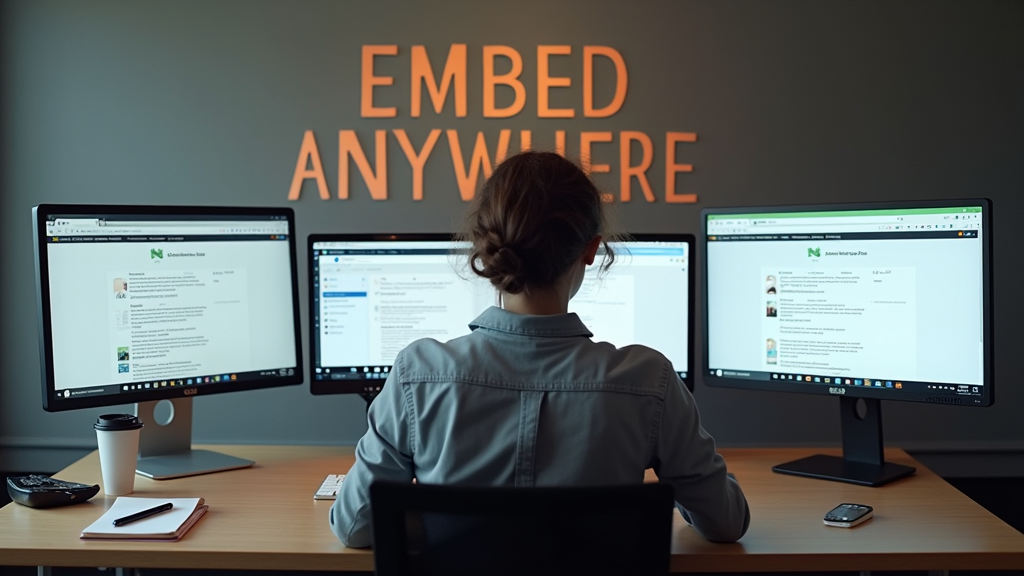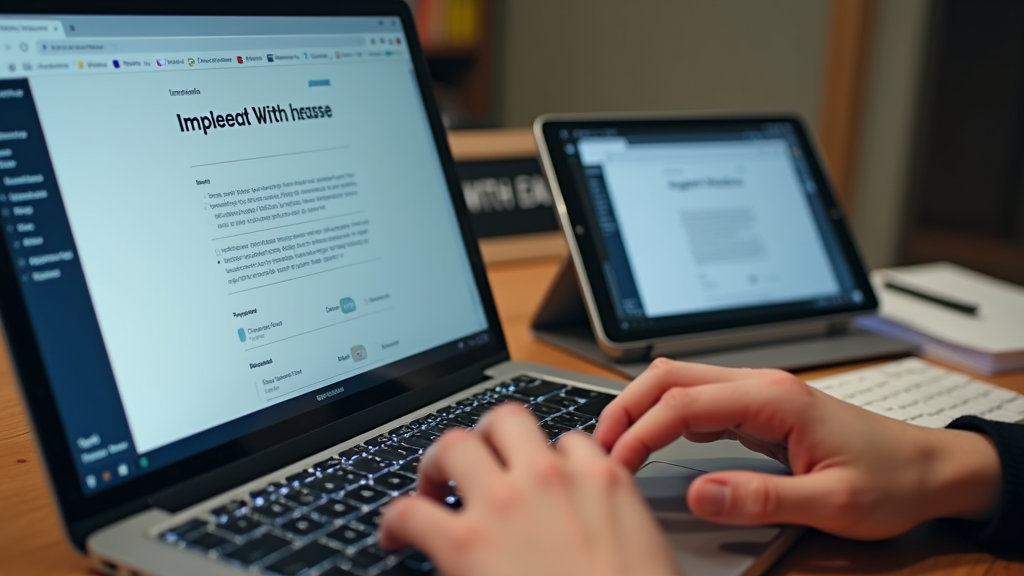
Introduction
You probably want to share your Notion pages on your website or app, but copying and pasting content isn't practical. That's why Notion embed options have become essential for anyone working with digital content. Whether you need to display project updates, documentation, or blog posts, the right embedding tool will save you time and keep your content in sync automatically.
Picking the best Notion embedding tool requires looking at several important factors. Your choice should fit your technical skills and budget while giving you the control you need over how your content looks. We considered four main points when reviewing these tools: how simple they are to set up, what you can change about their appearance, how much they cost, and how fast they load on your pages. These factors will help you find a tool that works well for your specific needs.
Super
Super helps you create professional websites using your Notion pages. You can turn your Notion workspace into a fully working website without writing code. The tool handles the technical parts of embedding Notion content while giving you control over how everything looks.
-
Pricing Options:
- Free plan for basic websites
- Pro plan at $12 monthly for custom domains
- Business plan at $49 monthly for advanced features
- Enterprise plan for large organizations
-
Main Features:
- Custom domain support
- SEO optimization tools
- Password protection
- Multiple theme options
- Analytics integration
-
Customization Choices:
- Brand colors and fonts
- Custom CSS options
- Navigation menu setup
- Mobile responsiveness settings
- Layout adjustments
Super works best if you want to create a blog, portfolio, or business website quickly using your existing Notion content. However, you might find some limitations with complex interactive features or very specific design requirements. The platform focuses on making Notion-based websites look professional while keeping things simple to manage.
Potion
Potion helps you turn your Notion pages into professional websites quickly. You can create beautiful web pages from your Notion content without writing code or dealing with complex setup processes. The tool connects directly with your Notion workspace and updates your website automatically when you make changes in Notion.
- Custom Domains: Connect your own domain name to your Potion website
- API Access: Build custom applications using your Notion content
- Real-time Updates: Your website changes as soon as you update Notion
- Password Protection: Control who can access your content
- SEO Tools: Help your pages rank better in search results
- Analytics: See how many people visit your pages
- Mobile Optimization: Your pages look great on phones and tablets
Your website visitors will notice faster loading times with Potion compared to embedding Notion directly. The pages load quickly because Potion turns your Notion content into clean, optimized code. This means better performance for your visitors and better search engine rankings for your website. Plus, you won't have to worry about Notion's interface elements showing up where they shouldn't.

Notion API
The Notion API lets you connect your Notion workspace with other apps and services. You can pull content from your databases, create new pages, or update existing ones automatically. This native functionality gives you the building blocks to create your own Notion AI tools without relying on third-party services.
- Technical Requirements: You need basic programming knowledge and API experience
- Authentication: OAuth 2.0 or Internal Integration Token required
- Rate Limits: Up to 3 requests per second
- Data Types: Supports pages, databases, blocks, and users
- Programming Languages: Works with any language that can make HTTP requests
- Documentation: Full API reference and starter guides available
The Notion API works best when you need complete control over your integration. Choose the API route if you want to build custom features, need real-time data syncing, or have specific security requirements. While third-party tools offer quick solutions, direct API access gives you flexibility to create exactly what you need without extra costs or dependencies. Just remember that you'll need development resources and time to build and maintain your integration.
Fruition
Fruition offers you a free, open-source way to customize your Notion workspace. You can use your own domain name and add custom features without paying for Notion's team plan.
- Technical Requirements:
- A GitHub account to access the code
- Basic knowledge of DNS settings
- Cloudflare account (free tier works fine)
- Your own domain name
- A public Notion page to customize
Getting Fruition to work on your website needs some technical know-how. You'll need to manage your own hosting through Cloudflare and handle any updates yourself. While the setup process might take some time, you won't have to pay monthly fees like you would with other Notion embedding tools. The trade-off is that you'll need to be comfortable with technical maintenance and troubleshooting if something goes wrong.
NotionX
NotionX gives you powerful tools to add Notion content to your websites and apps. You can pull in pages, databases, and blocks from Notion without complex setups. The library works well with popular frameworks like React and Next.js, making it easier to build features your users will love.
| Feature | NotionX | Traditional Embedding |
|---|---|---|
| Setup | Simple npm install | Multiple manual steps |
| Customization | Full control over styling | Limited to iframe options |
| Maintenance | Automatic updates | Regular manual updates needed |
You'll find NotionX useful when building knowledge bases, documentation sites, or content management systems. The library shines when you need to sync Notion content with your website automatically. For example, you can create a blog that updates whenever you publish new Notion posts, or build a product catalog that stays in sync with your Notion database.

Implementation Guide
Adding Notion content to your website can be tricky at first. You might run into issues with sizing, loading times, or mobile responsiveness. This notion embedding guide will help you avoid common problems and get your embedded content working smoothly.
1. Choose Your Embedding Tool
Pick a tool that matches your needs. Look at factors like customization options and pricing. Consider if you want basic embedding or advanced features like custom styling and interactive elements.
2. Set Up Your Embedding Code
Get your embed code from Notion by clicking "Share" and selecting "Embed." Copy the code and add it to your website where you want the content to appear. Make sure to follow your chosen tool's setup instructions.
3. Test Your Implementation
Check your embedded content on different devices and browsers. Pay special attention to how it looks on mobile phones and tablets. Test loading times and make sure all interactive features work as expected.
Your embedded Notion content will work better if you keep these tips in mind: limit the size of your Notion pages, use lightweight embedding options when possible, and regularly check your embedded content's performance. Always compress images in your Notion pages before embedding them, and remove any unnecessary elements that might slow down loading times.
Security Considerations
When you embed Notion content on your website, you need to think about security. Your embedded content can be viewed by anyone who visits your page, which might include sensitive information you want to protect.
- Access Control: Your public Notion pages need specific sharing settings. Check that only the content you want to share is visible.
- Data Privacy: Review your embedded content for personal information, internal links, or company data that should stay private.
- Authentication Methods: Choose the right authentication option for your embeds. You can use token-based authentication or API keys to control who sees your content.
To keep your embedded Notion content secure, always use HTTPS for your website and regularly review your sharing permissions. Set up clear rules about what content can be embedded and what should stay private. Update your access tokens regularly and remove any embeds you no longer need. This will help protect both your Notion workspace and your website visitors.
Conclusion
Choosing the right Notion embedding tool depends on your specific needs. You'll want to consider factors like block support, customization options, and loading speed when deciding how to embed in Notion. Security and regular updates should also be on your checklist to ensure your embedded content stays reliable and protected.
If you're a content creator, tools with extensive customization options will serve you best. Web developers might prefer solutions with API access and advanced integration capabilities. Small business owners should focus on tools offering simple implementation and stable performance without requiring technical expertise.
GetNotionEmbed by SolutionWise offers a comprehensive solution that works well for various use cases. You get lifetime access to the tool, which means no recurring subscription costs. The tool supports all Notion blocks and maintains the original formatting of your pages. With its focus on security and regular feature updates, you can trust it for both personal and professional use.
FAQ
What's the most cost-effective Notion embedding tool?
Super.so offers the best value for money, starting at $12 per month. For basic embedding needs, you can use Notion's free built-in embed feature. If you need advanced features like custom domains and deeper analytics, Potion provides a good balance of features and cost at $49 per month.
How do I ensure my embedded Notion content is responsive?
Your embedded content will automatically adjust to different screen sizes if you use the standard iframe embed code from Notion. For better responsiveness, set the width parameter to 100% in your embed code. You can also use tools like Indify that provide responsive templates ready to use.
Can I customize the appearance of embedded Notion pages?
Yes, you can customize embedded Notion content in several ways. For basic pages, use Notion's built-in styling options. For more control, tools like Notion2Site let you change fonts, colors, and layouts. You can also embed Notion content as PDF using the "Export as PDF" feature and then use PDF embed tools for additional styling options.
Do I need technical knowledge to use these tools?
Most Notion embedding tools are built for users without coding experience. You'll only need basic computer skills like copy-pasting and clicking buttons. However, if you want to add custom CSS or JavaScript, some technical knowledge will help. The basic embedding process takes about 5 minutes to complete.
How do these tools handle Notion updates?
Notion embedding tools automatically sync with your Notion pages. When you update your Notion content, the embedded version updates too. Most tools refresh content every few minutes. If you need immediate updates, many tools offer a manual refresh button. Remember to check your tool's documentation for specific sync settings.
